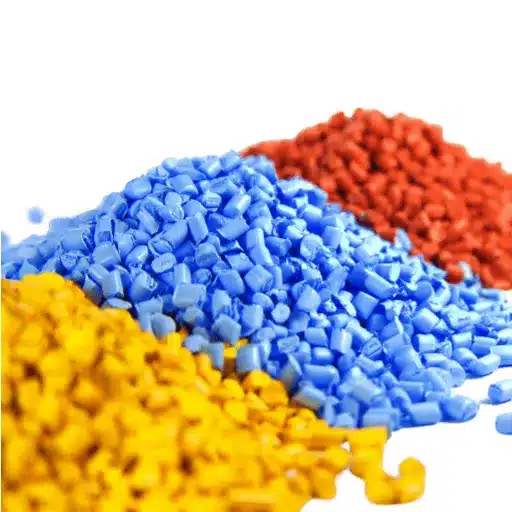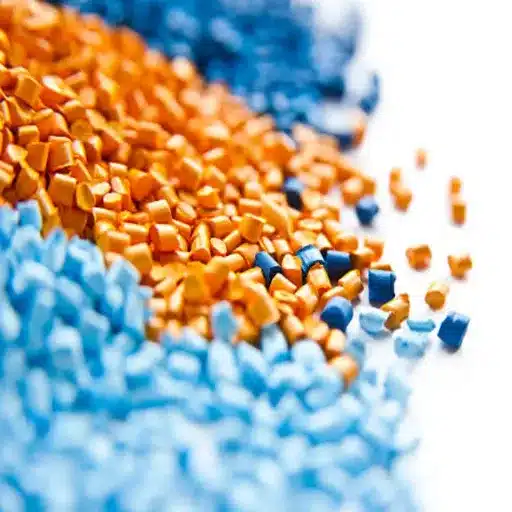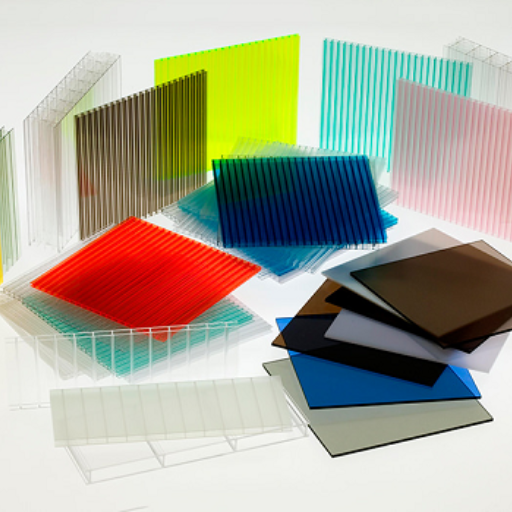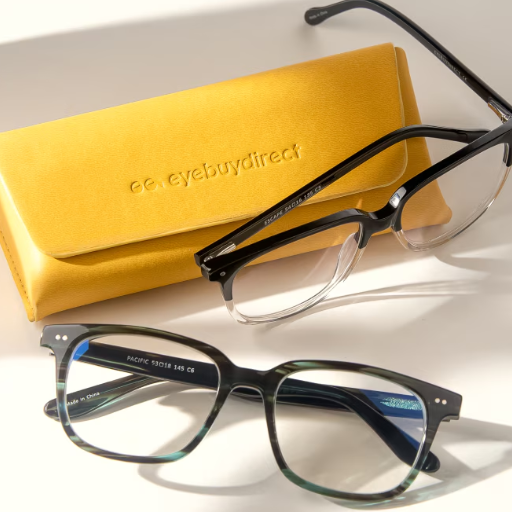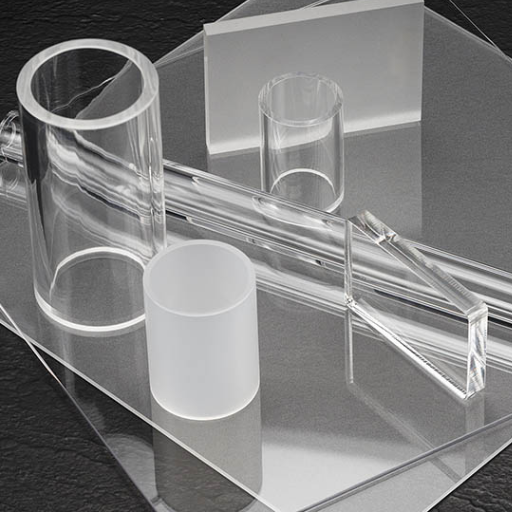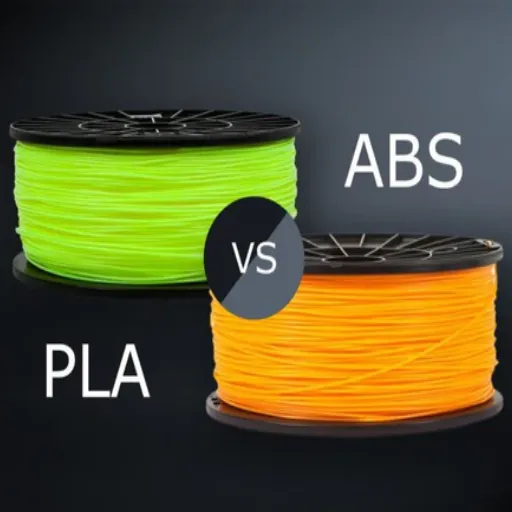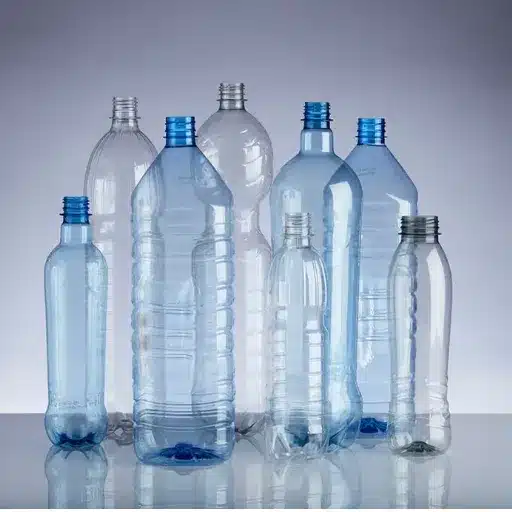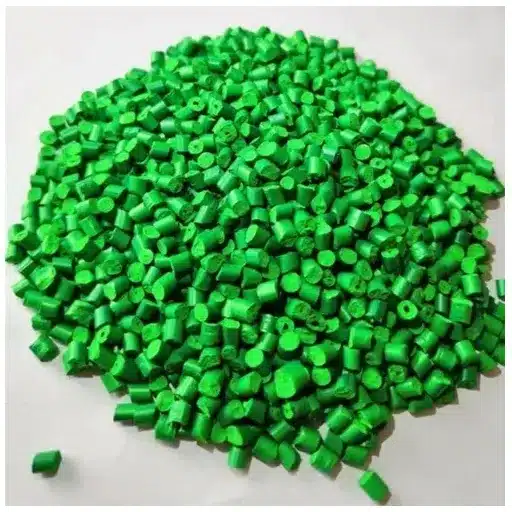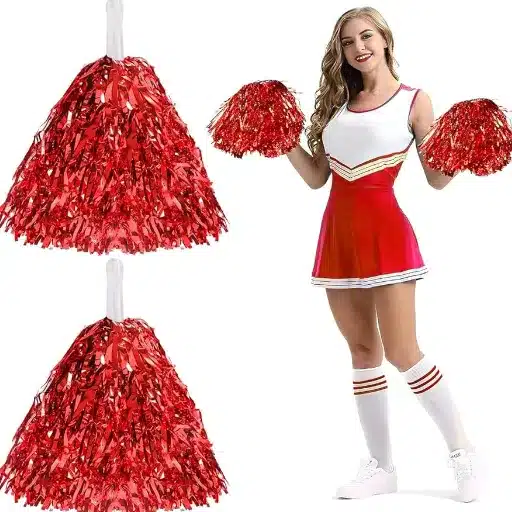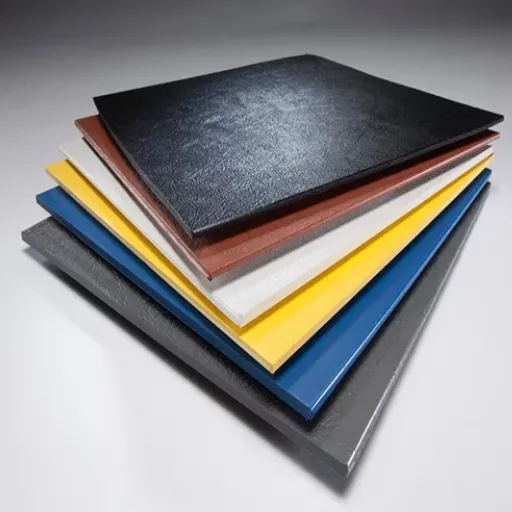Leading the way among the most commonly used materials are PLA and ABS, two powerful thermoplastics that share a big part of the market. But what are the criteria for making your decision on the one that fits your specific requirements? This guide clears the air of the PLA versus ABS debate by thoroughly scrutinizing their pros, cons, and perfect application areas. If you are an advanced 3D printing user or just starting to experience the creative world, this article will definitely provide you with the knowledge necessary for making a good choice. Let’s take a look at the filaments’ universe and tap into your next 3D printing project’s potential!
Understanding PLA and ABS Filaments
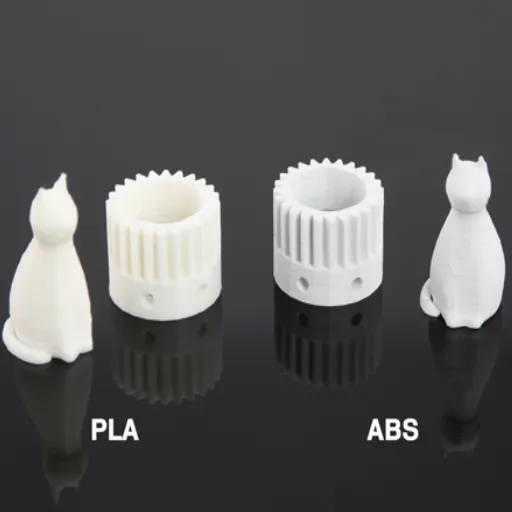
What is PLA?
🌱 Polylactic Acid (PLA)
PLA, or polylactic acid, is a biodegradable thermoplastic that is synthesized from the fermentation of renewable resources like corn starch or sugar cane. Due to its simplicity of use and environment-friendly characteristics, it has become one of the most popular materials in 3D printing.
PLA has a remarkable low melting point, minor warping during the whole printing process, which is perfect for new users and even for those who are producing intricate and visually appealing designs. It produces a faint smell while being heated and comes in many different colors, thus being an attractive option for not only figurines but also for models, parts, and so on which do not need to function. Meanwhile, it is also weaker in heat and impact resistance than other filaments that occupy the same segment as ABS; thus, it cannot endure the same conditions of wear or heat.
What is ABS?
🔧 Acrylonitrile Butadiene Styrene (ABS)
ABS or acrylonitrile butadiene styrene is a generic thermoplastic polymer that has complete domination in 3D printing and manufacturing industries owing to its powerfulness, longevity, and resistance to high temperatures.
It is 3x monomers—acrylonitrile, butadiene, and styrene—that give it admirable toughness, flexibility, and at the same time to be able to endure higher temps than PLA. ABS becomes very demanding in applications requiring strength, such as automotive parts, electronic housings, and functional prototypes. With that said, however, the printing process would need higher temps and preconditioned environment as it can produce strong smell and fumes during the heating process and it can also emit strong odors. Still, ABS would be the material of choice in places that need strength and thermal stability.
Common Applications of PLA and ABS
PLA and ABS are two of the most widely used materials in 3D printing, each offering distinct advantages depending on the application. PLA is a top choice for many applications because it is easier and more eco-friendly and is widely used in the development of prototypes, educational models, decorative items, and consumer goods where low environmental impact is important. It is used mainly for those requiring high detail and good aesthetics, often chosen by hobbyists and small-scale manufacturers.
However, ABS is the opposite; it is the king of the strong, durable, and heat-proof materials and so it is ideal for the very demanding purposes. The list of its common applications reads like a who’s who of modern materials use: automotive parts, industrial tools, protective casings, and functional hardware that must cope with stress and high temperatures. Its capacity to withstand wear and tear has made it the best option for end-users hence the products made of ABS would be suitable for longer times of application.
| Material | Primary Applications | Best For |
|---|---|---|
| PLA | Prototypes, educational models, decorative items, consumer goods | High detail, aesthetics, hobbyists |
| ABS | Automotive parts, industrial tools, protective casings, functional hardware | Strength, durability, heat resistance |
The benefits of using these two materials in combination have led to the opening of new markets for them across the board. In some cases, for instance, PLA is being employed for making models and later switching to ABS for producing sturdy, functional prototypes or final products. Data indicates that more designers are certainly trying to use mixed setups where PLA’s not-degradable feature is offset with the strength of ABS. The situation illustrates that their combo can have applications in sectors such as consumer electronics, education, and even sustainable engineering solutions.
Fundamental Differences Between PLA and ABS
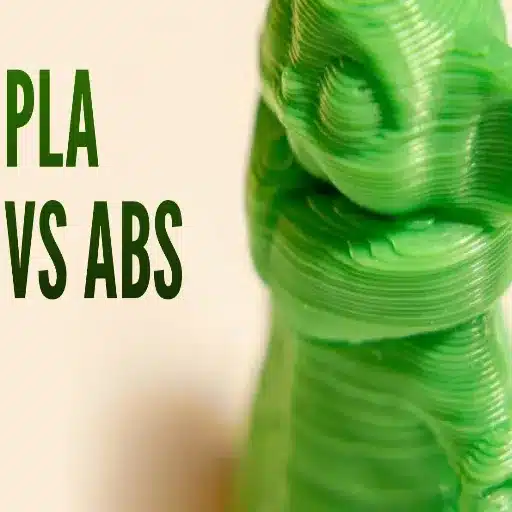
Physical Properties
The physical characteristics of PLA and ABS are very different from one another, and that is the reason why they are used in different applications. PLA is the most commonly used plastic for these being its low melting point, easier printability, and compostable nature that make it perfect for low-stress applications, quick prototypes, and learning/teaching activities. In contrast, ABS gives stronger parts, can withstand more heat, and has a longer life which makes it suitable for product applications needing strong mechanical properties or superior to stacking parts.
⚖️ Hybrid Applications: The Best of Both Worlds
The combination of the latest data plus the growing concern for the environment materials, has opened up discussion on the topic: Is it possible to combine PLA with ABS and create eco-friendly and flexible products? The solution is hybrid apps that take advantage of PLA’s eco-friendliness and ABS’s sturdiness. Using these traits together designers can come up with innovative solutions that focus on both sustainability and performance.
Strength and Durability Comparison
A number of factors that together show that PLA and ABS are complementary, highlight strength and durability comparison among them. PLA, a product of renewable corn starch, is rigid and biodegradable, which proves its eco-friendliness in short-term use and surroundings. Nevertheless, its constraining feature of being brittle combined with the less heat resistance that it offers, makes it unsuitable for the application of high-stress scenarios.
On the contrary, ABS is not only the champion in impact resistance but also is flexible enough to make it a contender for longevity and structural performance. Data obtained recently say that the combined PLA and ABS usage has already started to yield promising results. For example, co-printing can not only join the eco-advantages of PLA with the mechanical strengths of ABS but also creates products that are both robust and sustainable. This hybrid application meets the demand for materials that in the main concern being the environment and at the same time having high durability.
Temperature Resistance of PLA vs ABS
| Material | Glass Transition Temperature | Best Use Case |
|---|---|---|
| PLA | ~60°C (140°F) | Low-heat applications, indoor use |
| ABS | ~105°C (221°F) | High-heat applications, durability required |
In the course of the analysis of the thermal resistance of PLA and ABS, it is revealed that there are marked differences between the two that very much decide their use. PLA, on the other hand, is still credited with its eco-friendliness and ease of printing has a rather low glass transition temperature of about 60°C which is its major drawback. It thus becomes useless in areas presenting moderate heat and that would otherwise require a plastic material that can withstand higher temperatures for prolonged periods. On the contrary, ABS gives the user a significantly higher range with its glass transition temperature of about 105°C; thus, it is suited for those applications that require durability in hot conditions.
Recent data also point out that hybrid printing or co-extrusion of these materials can aid in balancing adoption of both. So to say, when the outer layer of the items made of PLA is made of ABS, the environment-friendliness of PLA is still maintained while the overall temperature resistance is improved. So the hybrid method helps the industry in getting the material that need not change their stand on the eco-friendly issues and yet performing well under various thermal conditions.
Advantages and Disadvantages of PLA and ABS

Pros and Cons of PLA
✅ Pros of PLA
- Environmentally Friendly: Plant-based, biodegradable, sustainable plastic choice
- Ease of Printing: Lower melting point, no warping, perfect for beginners
- Eco-Conscious Trends: Increasing consumer demand for bioplastics
- Non-Toxic in Use: Very few irritant fumes, safe for indoor use
- Wide Color Range: Available in many vibrant colors
❌ Cons of PLA
- Poor Heat Resistance: Melts at low temperatures, unsuitable for high-heat applications
- Brittleness: Not as tough as ABS, breaks under little force
- Decomposition Challenges: Requires industrial composting facilities
- Limited Mechanical Properties: Lower tensile and impact strength
- Not Weather Resistant: Degrades in outdoor conditions
💡 Hybrid Solution:
Some of the disadvantages mentioned earlier can be countered by the combination of PLA and ABS through hybrid printing. For example, ABS brings in the quality of flexibility, the property of heat resistance, and strength of strength that overcomes the limitations of PLA while still being an eco-friendly base. The hybrid treatment not just prolongs the life of each material but also patiently awaits the sustainability-oriented yet tough and innovative manufacturing and 3D printing industry.
Pros and Cons of ABS
✅ Pros of ABS
- High Durability: Impact resistant, tough, excellent for functional parts
- Heat Resistance: Much higher than PLA, stable at elevated temperatures
- Flexibility and Strength: Better flexibility without sacrificing structural integrity
- Machinability: Easily drilled, sanded, or glued for post-processing
- Recyclability: Can be recycled, aligning with eco-sensitive practices
❌ Cons of ABS
- Environmental Concerns: Petroleum-based, less eco-friendly than PLA
- Fumes During Printing: Generates potentially toxic fumes, requires ventilation
- Warping: Prone to warping due to uneven cooling
- Cost: May be more expensive than PLA depending on quality
- Non-Biodegradable: Does not decompose naturally
The combination of ABS and PLA through hybrid printing or material blending signals a bright future in 3D printing. By taking advantage of the environmental benefits of PLA and the improved mechanical properties of ABS, the manufacturers can make products that are not only durable or heat resistant but also eco-friendly. Such a hybrid method caters to the ever-increasing demand for products that are both environment-friendly and high performance in the process of the evolving industry standards.
Types of Filament: A Comparative Study
Examining PLA and ABS side by side results in their special properties fulfilling different needs in 3D printing. PLA, which is made from renewable resources such as corn starch, is of course biodegradable and gives off a nice and light odor when being printed. This is why it is the main choice for projects that consider the environment and also for applications that need high detail. On the other hand, ABS is strong, durable, and heat-resistant, which makes it the perfect material for functional prototypes and parts that need to last under stress.
| Feature | PLA | ABS |
|---|---|---|
| Source Material | Corn starch, sugarcane (renewable) | Petroleum-based |
| Biodegradability | Yes (industrial composting) | No |
| Printing Difficulty | Easy (beginner-friendly) | Moderate to difficult |
| Odor When Printing | Faint, sweet smell | Strong fumes (ventilation needed) |
| Strength & Durability | Rigid but brittle | Tough and flexible |
| Best Applications | Prototypes, models, decorative items | Functional parts, automotive, electronics |
According to the latest information, the industry is starting to adopt hybrid blends of PLA and ABS more and more. These blends are the sort of solution that come by mixing the eco-friendly character of PLA with the strong mechanical properties of ABS. Search trends show that hybrid filaments and sustainable 3D printing materials are inquiries that have been gradually increasing, which means that the industry is becoming more and more focused on manufacturing practices that are responsible.
Environmental Impact of PLA and ABS

Biodegradability of PLA
PLA (Polylactic Acid) is a biodegradable material that among others makes it a 3D printing material that is environmentally friendly. It is processed from renewable materials like cornstarch or sugarcane and purposely made to decompose within a few months in industrial composting settings thus being an attractive option for green manufacturers. Recent search trends have shown an obvious increase in inquiries regarding the disposal and biodegradation of PLA which is to say that more people are getting interested in sustainable practices.
⚠️ Important Note About PLA Degradation
Nevertheless, it’s worth mentioning that the degradation of PLA is very slow and inefficient in the natural environment e.g. soil and seawater, since it is hard to create specific conditions such as high temperature and controlled humidity to facilitate its decomposition. This requirement underlines the need for proper disposal systems that can fully harness the eco-friendliness of PLA.
Recycling Options for ABS
Acrylonitrile Butadiene Styrene (ABS) is a very strong and versatile thermoplastic that is commonly used as a material for things like vehicle parts, electronics, and the 3D printing process. One of the difficulties in recycling ABS is that it is very widely used in mixed-material items and that it becomes thermosetting after being extensively heated which means it cannot be reshaped anymore. Nevertheless, technology for recycling has developed and now it is much easier to recover and reuse ABS.
♻️ ABS Recycling Methods
- Mechanical Recycling: The most frequently used method – breaks down material into small granules which are then melted and molded into new products
- Chemical Recycling: A developing method that aims to decompose ABS to its original monomers, allowing for more efficient reuse
- Take-Back Programs: Some manufacturers offer programs to gather and process ABS waste
The data indicates that the most frequently used method for ABS is still mechanical recycling. Companies and projects that focus on plastic recycling are more and more introducing programs to gather and process ABS waste but these methods are heavily dependent on the consumers’ participation as well as on proper sorting at the source.
To promote the recycling of ABS to the highest extent possible, consumers are advised to find the plants that are dedicated to the recycling of thermoplastics and to participate in the take-back programs that some manufacturers of certain products have. Raising public awareness and the collaboration of industries and governments are pivotal to scaling good ABS recycling systems and cutting its environmental footprint down.
Comparative Environmental Footprint
Acrylonitrile Butadiene Styrene (ABS) when assessed against other materials having different environmental footprints brings up many issues and resource extraction, production energy, durability, and recyclability are just a few examples. ABS has been said to have a moderate environmental footprint that is attributed to its being derived from petroleum and an energy-consuming manufacturing process, according to recently released data and analysis. Not infrequently, however, it is less durable materials like traditional single-use plastics that have to take the brunt of the environmental impact due to frequent replacements necessitated by their shorter life spans and thus the need for the production of new ones.
Although they might seem to be good alternatives, recycled or bio-based plastics would still have their emissions during production that could be deemed as their major drawback. But to put it in another way, they are superior to ABS in some areas but they cannot do the job completely with that. However, the case for metals which are not only durable but also highly recyclable is less straightforward as their processing and transportation consume more resources and energy than those of ABS. Hence, even though the environmental footprint of ABS is still considerable, its superior performance characteristics, recyclability potential, and lifespan make it a comparative alternative for multiple industries presence or absence of effective recycling systems at that.
Use Cases in Various Industries

3D Printing in Prototyping
3D printing has positively changed the way prototypes are made in different sectors by providing them with the best possible flexibility and quickness. By making the primary material ABS (Acrylonitrile Butadiene Styrene), makers can produce superior prototypes with incredible sturdiness and heat resistance. To illustrate the above and to make it clearer, according to the most recent trends reported by search data, the use of 3D printing for prototyping based on ABS has drastically increased in demand since the latter has been the main driver of the trend due to its cheapness and user-friendliness.
🏭 Industries Benefiting from 3D Printing Prototyping
- Automotive: Shortened product development cycles, functional prototypes
- Aerospace: Lightweight component testing, rapid iteration
- Consumer Electronics: Reduced production costs, design validation
- Sustainable Practices: Increasing incorporation of recyclable ABS materials
Applications in Manufacturing
Without a doubt, ABS (Acrylonitrile Butadiene Styrene) is a key material in the manufacturing process, especially in rapid prototyping and end-use parts production. Its excellent mechanical properties including toughness, resistance to impact, and high temperature resistance make it the material of choice for constructing not just the strongest prototypes but also products that can actually be used.
According to the latest data, car and electronics industries are using ABS in both injection molding and 3D printing often to create parts that are not only lightweight but also strong enough to be used in the production of dashboards, casings, and even structural components. The growing popularity of recyclable ABS is like a double-edged sword as it proves both the competence of the material and it being a key element in the transition to more sustainable manufacturing practices which are, in fact, the modern environmental standards.
Educational Uses of PLA and ABS
Very often mentioned, but the least talked about materials, PLA and ABS have found their way to become essential in education, especially in 3D printing. Based on recent data, schools, universities, and makerspaces have made these thermoplastics their go-to materials for teaching design, engineering, and manufacturing concepts.
| Material | Educational Level | Key Benefits |
|---|---|---|
| PLA | Beginner to Intermediate | User-friendly, low printing temperature, eco-friendly, perfect for prototyping |
| ABS | Advanced Projects | Superior durability, can be sanded or drilled, industry-standard material |
PLA, because of its user-friendliness, low printing temperature, and being an eco-friendly material, is usually the first choice in prototyping and beginner lessons in 3D printing. ABS, however, is reserved for more advanced projects owing to its superior durability and the fact that it can be subjected to sanding or drilling like other common objects without losing its quality. By using both PLA and ABS, students are not only getting the chance to play with materials that are similar to what is used in the industrial world, but are also being creative and acquiring the skills they need to qualify for careers in engineering, product design, and other areas of STEM education.
Choosing the Right Filament for Your Project
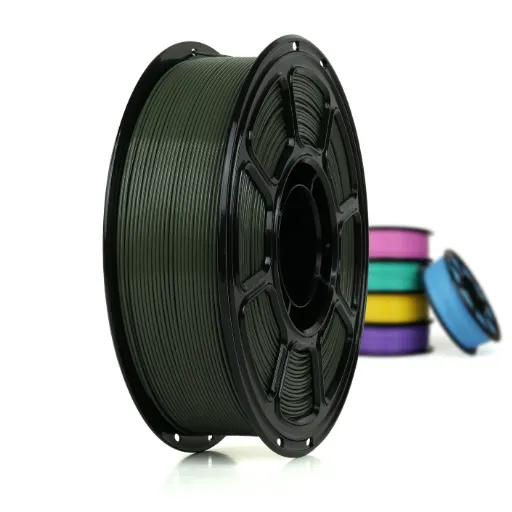
Factors to Consider When Deciding Between PLA and ABS
In case a decision has to be made on the use of PLA or ABS for a project, there are four important aspects to evaluate namely, temperature resistance, strength, ease of printing, and environmental impact:
🌡️ Temperature Resistance
For projects that demand high durability, ABS is the preferred choice, since it has a higher glass transition temperature when compared to PLA, thus it is perfect for mechanical parts or outdoor applications. Conversely, PLA is subject to heat and prone to deformation when used in such applications due to the nature of its being temperature-sensitive.
🖨️ Ease of Printing
The 3D printing community broadly recognizes PLA as being more user-friendly due to its lower printing temperature and minimal warping during cooling. It is great for beginners to get acquainted to 3D printing or very small desktop printers. ABS has more strength, but it often demands a heated bed and a controlled environment to mitigate snags like warping or cracking during the printing process.
🌍 Environmental Impact
PLA is biodegradable and largely composed of renewable sources like cornstarch, making it more eco-friendly than ABS which is entirely oil-based and thus less environmentally friendly at both production and disposal stages.
💪 Strength and Durability
While ABS is more impact resistant and durable, it functions in producing prototypes that are functional and even industrial-grade applications. Still, PLA is the go-to when projects focus on beauty, detail, and moderate strength instead of extreme toughness.
🎯 Quick Decision Guide
Choose PLA if your project is beginner to intermediate level because of the ease of use and the reduced negative impact on the environment.
Choose ABS for professional or advanced applications that need to possess more demanding structural properties.
Perplexing as it is, the latest data reveals that the most versatile option remains a common query among users. By and large, the user experiences and professional advice dictated that PLA is the best filament to consider if the project is of beginner to intermediate level. However, it is not the same with ABS, as it is the material of choice for professional or advanced applications. In a nutshell, the decision on which filament to go for ultimately rests on the distinct needs of the project in a way that gives equal consideration to practicality, sustainability, and technical requirements.
Printer Capabilities and Filament Compatibility
When you are choosing a 3D printer and filament, it is essential to make sure that they are compatible with each other for getting the best results. The modern 3D printers are frequently using very complicated features like heated beds, guardian chambers, and adjustable nozzle temperatures that usually enhance the list of filaments the printer can support.
For instance, it is more convenient to work with ABS and Nylon in printers with heated beds and enclosed build areas, which require a stable, high-temperature environment to avoid warping and other related problems. On the other hand, non-heated printers fit perfectly PLA, which is user-friendly and prints well at lower temperatures and without additional climate control.
📊 Current Trends in Filament Selection
- Growing interest in multi-material compatibility for flexible printing
- Increased demand for eco-friendly and recycled materials
- Preference for specialty blends like PETG and TPU
- Focus on sustainability without compromising performance
Based on the current search trends and data, it can be seen that the interest in multi-material compatibility is becoming more popular. The majority of the users are looking for 3D printers that are flexible to switch between filaments such as PETG, TPU, and specialty blends without affecting the quality of prints. Studies reveal that the consumers want filaments that are eco-friendly and made from recycled materials, thus the demand for sustainability is over the performance. Knowing exactly what your printer can do with regard to your material choices can not only increase the quality and efficiency of your projects but also make this knowledge a key consideration for both professionals and hobbyists.
Practical Tips for 3D Printing with PLA and ABS
By taking into account the specific characteristics of the filaments PLA and ABS and adjusting your setup accordingly, you will be able to achieve better results. PLA, which is known for its ease of use, can be printed on standard print bed temperatures ranging from 50-60°C and generally does not require an enclosed printer. ABS, on the contrary, benefits from heated bed temperatures of around 90-110°C and an enclosed printing space that prevents warping due to cooling.
🔧 Essential Printing Tips
- Adjust Print Bed Temperature: PLA (50-60°C) vs ABS (90-110°C)
- Ensure Proper Adhesion: Use glue sticks, painter’s tape, or specialized build plates
- Manage Temperature Gradients: Critical for composite designs combining PLA and ABS
- Regular Maintenance: Clean nozzles regularly to prevent clogging
- Calibrate Consistently: Regular printer calibration ensures uniformity in results
- Control Print Speeds: Adjust based on design intricacy
Adjusting of print speeds is significant taking into accounts the intricateness of the designs, making sure proper adhesion by using materials like glue sticks, painter’s tape, or specialized build plates is also vital. The most recent data reveals that the market for heat-resistant settings is increasing when combining PLA and ABS prints. Users are advised to concentrate on the temperature gradients management if the two materials are to be used in composite designs as this will guarantee the adhesion of the layers. Trends data emphasizes the constant search for solutions to the problems of warping and clogging of the nozzle, hence proper maintenance of the printer such as regular cleaning of the nozzle and calibrating the printer becomes indispensable in achieving uniformity in the results. Tailoring these strategies to the specific material and design will help users enhance the durability and accuracy of their 3D-printed projects.
Frequently Asked Questions
The distinction between PLA and ABS is mainly in their characteristics and behavior in the 3D printing process. PLA, which stands for polylactic acid, is a thermoplastic that is biodegradable and user-friendly, thus requiring less energy for printing. Conversely, ABS, or acrylonitrile butadiene styrene, gives better strength and durability, therefore it is widely used for making functional parts. Reassessing the two, firstly, the tensile strength and secondly, the chemical resistance of ABS, are still considered to be better than those of PLA. On the other hand, PLA usually gives a better final appearance and warping during printing is less common with its use. To conclude, the decision of PLA vs. ABS is really about the specific 3D printed part’s requirements.
The selection of either PLA or ABS filament hinges on your project criteria and the priority you give to the characteristics of the printed part. If you want the most user-friendly approach, low-temperature printing, and a more eco-friendly choice, then PLA is the best option. But if you are after a material that gives better strength, durability, and higher heat resistance, then ABS is the way to go.
Moreover, this material is particularly suitable for parts that would be subjected to higher temperatures or mechanical stress. Furthermore, if your application necessitates good chemical resistance, then ABS will certainly outperform PLA. Hence, it is important to assess your project’s requirements when choosing between PLA and ABS.
To put it simply, yes, ABS is usually considered stronger than PLA in the areas of tensile strength and impact resistance. Even though PLA is the first choice for many 3D printing applications due to its user-friendly nature and minimal warping, it eventually becomes more brittle when compared to ABS. This brittleness is the reason why PLA should not be used for parts that are likely to undergo mechanical stress. On the other hand, ABS being a flexible material will not only absorb impact better but will also not succumb to stretching as easily. Although, it must be pointed out that the filament’s specific properties can differ by brand so it is always best to check the specifications for the ABS filament you are getting.
Printing with PLA is compared to printing with ABS in terms of the former being easier to handle mainly because of its lower melting temperature and reduced tendency to warp. A typical case of PLA is that it sticks well to the print bed and does not need a heated bed and thus it will be perfect for newcomers to 3D printing. On the contrary, the printing of ABS is done with a heated bed which is necessary for minimizing warping and getting good adhesion throughout the printing process. Besides that, ABS gives off fumes when printing which might necessitate good ventilation while PLA is odorless and has a pleasant sweet scent. So, if you are thinking about what material to use think about your printing environment and the fundamental properties of your final printed part.
PETG can be considered as a good alternative to both PLA and ABS for 3D printing applications. It offers the best characteristics of both the materials; that is, the combination of good strength and flexibility coupled with easy printing. Compared to PLA, PETG is more resistant to moisture and chemicals making it usable for a larger number of applications including outdoors. Besides that, PETG also has a lower tendency to warp than ABS, therefore, it is easier to handle. If you want a filament that has the qualities of being durable and chemically resistant but is also easier to print than ABS, then PETG is the answer. Ultimately, the choice will depend on your project’s specific needs.
Reference Sources
- University of Maryland – 3D Printing at the Innovation Space:
Discusses the properties of PLA and ABS, including their suitability for mechanical settings and aesthetic applications. Source
- Baruch College – Most Popular 3D Printing Filaments:
Provides an overview of PLA and ABS, highlighting their melting points, durability, and common uses. Source
- Idaho State University – 3D Print Materials:
Explains the differences between PLA and ABS, focusing on their thermoplastic properties and applications. Source
Key Takeaways
🌱 PLA is your go-to choice for eco-friendly, beginner-friendly projects with high detail and aesthetic appeal. Perfect for prototypes, educational models, and decorative items.
🔧 ABS excels in strength, durability, and heat resistance, making it ideal for functional parts, automotive components, and industrial applications.
🔄 Hybrid Solutions combining both materials represent the future of 3D printing, balancing sustainability with performance for innovative manufacturing.
💡 Final Advice: The choice between PLA and ABS ultimately depends on your specific project requirements. Consider temperature resistance, printing environment, environmental impact, and the mechanical properties needed for your application. Both materials have their place in the world of 3D printing, and understanding their strengths will help you make the best decision for your creative endeavors.







